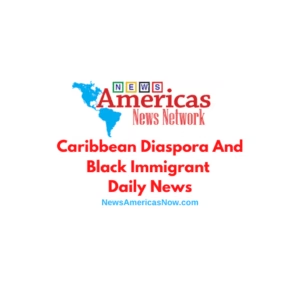
By NAN Staff Writer
News Americas, TORONTO, Canada, Tues April 26, 2016: Unlike US Census forms, UK Census forms allow for Caribbean immigrants/nationals to self-identify as an ethnic group, allowing for a much more accurate count of immigrants from the region or those with Caribbean nationals to be identified. Here are 10 fast facts of the Caribbean population in the UK based on its most recent census data. The next UK census won’t be held until 2021.
1: Of the 6 million residents in England and Wales, Black/African/Caribbean/Black British make up 3 percent or some 992,000.
2: However, when compared to the foreign born population, they made up 13 percent of the total group.
3: The majority of foreign-born or 61 percent who are Black Caribbean arrived in the UK before 1981. Most are from Jamaica, Trinidad & Tobago, Guyana and Barbados.
4: Jamaicans were the highest number of Caribbean nationals in the UK, put at an estimate 160,000. The number of Trinidadians in the UK is put at 23,000. The number of Guyanese total 21,000. The number of Barbadians were put at 19,000. 9,274 were from Grenada; 9,096 St Lucia; 7,390 St Vincent and the Grenadines; 7,270 Montserrat; 6,359 Dominica; 5,629 St Kitts and Nevis; 3,697 Antigua and Barbuda; 2,355 Cuba; 1,812 The Bahamas and 1,303 Dominican Republic. 8,301 people reported being born elsewhere in the Caribbean.
5: Caribbean people are present throughout the United Kingdom with by far the largest concentrations in London and Birmingham. Significant communities also exist in other population centres, notably Manchester, Bradford, Nottingham, Coventry, Luton, High Wycombe, Leicester, Bristol, Gloucester, Leeds, Huddersfield, Sheffield, Liverpool and Cardiff. In these cities, the community is traditionally associated with a particular area, such as Brixton, Harlesden, Stonebridge, Dalston, Lewisham, Tottenham, Peckham in London, West Bowling and Heaton in Bradford, Chapeltown in Leeds, St. Pauls in Bristol, or Handsworth and Aston in Birmingham or Moss Side in Manchester.
6: According to the 2011 census, the largest number of African-Caribbean people are found in Croydon, south London.
7: Prominent African-Caribbean people in Britain during the 19th century include: William Davidson (1781–1820); Cato Street Conspirator, Rev. George Cousens, a Jamaican who became minister of Cradley Heath Baptist Church in 1837; Mary Seacole (1805–1881), a nurse in the Crimean War; Walter Tull, footballer and soldier; Andrew Watson, footballer; Robert Wedderburn (1762-1835).
8: The growing Caribbean presence in the British military led to approximately 15,000 migrants arriving in the north-west of England around the time of World War I to work in munitions factories. The ship MV Empire Windrush brought the first group of 492 immigrants to Tilbury near London on 22 June 1948.
9: Britons of Caribbean origin are nonetheless under-represented in local and national politics. However, there have been some successes. In 2015 there are three Caribbean roots Members of Parliament. They are: Jamaican roots Dawn Butler of Brent Central and Diane Julie Abbott of Hackney North & Stoke Newington and Guyanese roots David Lindon Lammy of Tottenham on the Labor side.
10: British African-Caribbean people have an extremely high rate of mixed-race relationships, which, combined with lowered birth rates and a small population in their homelands, could make them become in effect the first UK ethnic group to “disappear”. Half of all British African-Caribbean men in a relationship have partners of a different ethnic background, as do one-third of all British African-Caribbean women.











